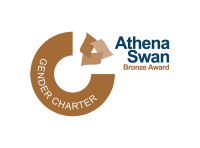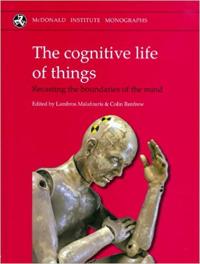
Our full catalogue is presented here by publication date. Our publications are distributed by Pen & Sword Books/Casemate Academic. Direct links to Pen & Sword Books are included in the catalogue where the book is still in print. We also sell some of our publications as e-books.
Publications
The cognitive life of things | The global origins and development of seafaring | The Upper Palaeolithic revolution in global perspective | Grounding knowledge/walking land | Mortuary customs in prehistoric Malta | Horizon | Keros, Dhaskalio Kavos | Simuations, genetics and human prehistory | Excavations at Kilise Tepe, 1994–98 | Image and imagination | Mediterranean prehistoric heritage | The Nostratic dictionary | Prehistoric Cranbourne Chase, Dorset | Rethinking the human revolution | Testing the hinterland | Archaeoacoustics | Excavating Çatalhöyük | The Haddenham Project, vol 2 | The Haddenham Project, vol. 1 | Phylogenetic methods and the prehistory of languages
2010
The cognitive life of things: recasting the boundaries of the mind
edited by Lambros Malafouris and Colin Renfrew
Hardback | £30 / US $60 | ISBN 978-1-902937-51-9 | 208 pp. | 53 figs. | 2010 | NB now only available from Casemate or directly from the McDonald Institute.

Things have a social life. They also lead cognitive lives, working subtly in our minds. But just how is it that human thought has become so deeply involved in and expressed through material things? There is today a wide recognition that material culture regulates and shapes the ways in which people perceive, think and act. But just how does that work? This is one of the most challenging research topics for the archaeology and anthropology of human cognition. The understanding of the working of past and present material culture – its cognitive efficacy – is becoming a key issue in the cognitive and social sciences more widely.
This volume, with innovative case studies ranging from prehistory to the present, seeks to establish a cross-disciplinary framework and to set out future directions for research. Its aim is to redress the balance of the cognitive equation by at last bringing materiality firmly into the cognitive fold. But how can we integrate artefacts – material culture – into existing theories of human cognition? How do we understand the significant role of the human use of the things we have ourselves created in the development of human intelligence? The distinguished contributors here argue that the boundaries of the mind must now be understood as extending beyond the individual and to include the world of the artefact if we are fully to grasp how interactions among people, things, space and time have come, over thousands of years, to shape the transformations in human cognition that have made us what we are.
Lambros Malafouris is a former Balzan Postdoctoral Research Fellow in Cognitive Archaeology at the McDonald Institute, Cambridge University.
Colin Renfrew is a Senior Fellow of the McDonald Institute and Emeritus Disney Professor of Archaeology in the University of Cambridge.
The global origins and development of seafaring
edited by Atholl Anderson, James H. Barrett and Katherine Boyle
Hardback | £44 | ISBN 978-1-902937-52-6 | 320 pp. | 115 figs. | 2010 | Out of print
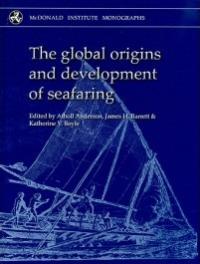
When and in what circumstances did seafaring begin and how is it understood from the perspectives of maritime technology? This volume explores key themes in maritime prehistory from the perspective of seafaring, discussing the circumstances and incentives of seafaring development, its patterning in relation to periods of migration and trade and the relationship between sailing and society.
The sea was dangerous and difficult to predict, but from at least the Middle Palaeolithic people sought its resources and attempted to move on its surface or beneath. The evolution of watercraft facilitated coastal foraging, fishing, hunting and travel, and the later development of sailing allowed long offshore passages, fundamental to all other sea-borne activities and interests. Increasing maritime exploration, migration, trade and colonialism together stimulated the integrating effects of globalization, describe a developing reach and complexity in human affairs that is comparable with, and in various ways holds up a mirror to, the course of terrestrial prehistory across the late Quaternary.
The history of the sea, no less than that of the land, speaks to the development of modern humanity and the discussions in Global Origins of Seafaring will make a strong contribution to the construction of a better theoretical framework for seafaring studies.
The Upper Palaeolithic revolution in global perspective: papers in honour of Sir Paul Mellars
edited by Katherine V. Boyle, Clive Gamble and Ofer Bar-Yosef
Hardback | £45 / US $90 | ISBN 978-1-902937-53-3 | 177 pp. | 1 col. & 51 b/w figs. | 13 tables | 2010 | Buy now
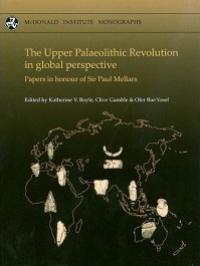
The Palaeolithic is the only period in archaeology that can be studied globally. In the last half century one prehistorian, Sir Paul Mellars, has changed the shape and direction of such studies, adding immeasurably to what we know about humanity's earliest origins and the timing of crucial transitions in the journey.
The Upper Palaeolithic Revolution in global perspective is a collection of essays in his honour. Contributions cover both his own area of primary interest (Franco-Cantabria) as well as many other regions of the world, all of which he has considered while writing about the human revolution in its wider geographical context. Papers in this volume examine the archaeological record of the Upper Pleistocene from Australia, through eastern and western Asia and Africa to northern Spain and the classical Périgord region of France, a cornerstone region which Mellars has been researching and publishing on since 1965. To papers on chronology, typology, subsistence and social complexity are added historical and theoretical contributions, along with a biography. These illustrate not only Paul Mellars’s impact on the current shape and direction of Palaeolithic studies but also how the subject has changed and continues to change.
2009
Grounding knowledge/walking land: archaeological research and ethno-historical identity in central Nepal
by Christopher Evans, with Judith Pettigrew, Yarjung Kromchain Tamu and Mark Turin
Hardback | £40 / US $80 | ISBN: 978-1-902937-50-2 | 223 pp. | 116 figs. | 12 tables | 2009 | Buy now
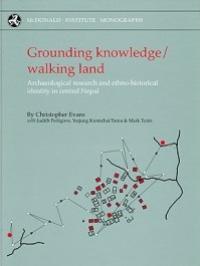
Tracking knowledge down to ground – concerned with trail-based archaeology, journeys and histories, this is a volume of both ‘firsts’ and ‘thick context’. At face-value it documents almost a decade of groundbreaking investigations within the Annapurna highlands of Nepal. Including survey recording of fort and settlement sites, from the outset the project’s focus was the extraordinary ruins of Kohla Sombre – Kohla, The Three Villages – the ancestral settlement of the Tami-mai (Gurung) community, who hosted and instigated the fieldwork programme.
Ultimately, only a single season’s excavation was conducted, before the project was cut short by the political insurgency within the country. It concluded with holding a great shamans’ meeting in Pokhara in 2002, at which their historical ‘oral texts’ were presented. Narrating the long migration of the Tamu-mai into the region and down from a distant north, the present volume includes the full translation of one of these oral epics, the Lemako Roh Pye.
The project represents a unique collaboration between archaeologists, anthropologists and a shaman. Including interviews with upland inhabitants, the volume encompasses the diverse voices of both its immediate participants and the local community. Fulsome in its presentation of the archaeological data and rich in ethnographic source-material, not only is this book crucial for Himalayan culture studies generally, but also relevant for any concerned with the construction and context of the past in the present, and the active forging of ethno-historical identities.
Aside from widely publishing on the history of archaeology, Christopher Evans has, since 1990, been Executive Director of the University’s Cambridge Archaeological Unit. Having directed local fieldwork campaigns for more than 25 years, he has also been responsible for other collaborative projects in Nepal, China and, most recently, Cape Verde.
Mortuary customs in prehistoric Malta: excavations at the Brochtorff Circle at Xaghra, Gozo (1987–94)
edited by Caroline Malone, Simon Stoddart, Anthony Bonnano and David Trump, with Tancred Gouder and Anthony Pace
Hardback | £95 / US $170 | ISBN 978-1-902937-49-6 | 424 pp. | 300 figs. | 2009 | Out of stock
ebook | ISBN 978-1-902937-49-6 | 424 pp | 300 figs. | 2009 | Download now for free
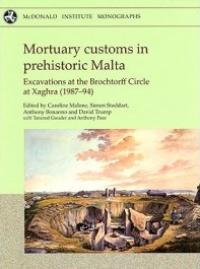
Amongst the earliest stone architecture in the world, the Neolithic temples and hypogea of Malta testify to a sophisticated island culture. Explored in the early twentieth century, the subterranean burial temple, the Hal Saflieni Hypogeum, was cleared of its burials and artefacts without detailed record. Late in the twentieth century, excavation at Xaghra on Gozo rediscovered a second cave cemetery that provides a unique comparison through the investigation of a substantial portion of the buried site using modern scientific techniques. This revealed one of the largest prehistoric burial assemblages of human remains yet discovered in the Mediterranean, amounting to some 220,000 bones, together with a rich assemblage of animal bone, figurative sculpture, symbolic artefacts and architectural remains.
The detailed factual and interpretative report on this site, supported by fresh scientific data on raw materials, landsnails and environment, isotopes, radiometric dating and statistical analysis, is placed in the broader framework of the domestic and ritual landscape of the Maltese islands. The result is one of the most comprehensive studies of the incipient complexity of this mature, agricultural, but non-urban, island society so far published. 424p, 300 illus. (McDonald Institute for Archaeological Research 2009)
“The Brochtorff Circle is an outstandingly important site and this publication will make a major and long-lasting contribution to understandings of Mediterranean prehistory” - Professor Ruth Whitehouse (Emeritus Professor of Archaeology, Institute of Archaeology, University College London)
2008
Horizon: a colloquium on the prehistory of the Cyclades
edited by Neil Brodie, Jenny Doole, Giorgos Gavalas & Colin Renfrew
Hardback | £65 / US $130 | ISBN 978-1-902937-36-6 | 540 pp. | 60 col. & 471 b/w figs. | 2008 | Buy now
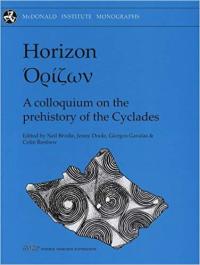
The Cycladic Islands of Greece played a central role in Aegean prehistory, and many new discoveries have been made in recent years at sites ranging in date from the Mesolithic period to the end of the Bronze Age. In the well-illustrated chapters of this book, based on the recent conference held at the McDonald Institute for Archaeological Research in Cambridge, international scholars including leading Greek archaeologists offer new information about recent developments, many arising from hitherto unpublished excavations. The book contains novel theoretical insights into the workings of culture process in the prehistoric cultures of the islands. It will be an indispensable resource for students and scholars interested in the prehistory of the Aegean and in the contributions made to its development by the prehistoric inhabitants of the Cyclades.
Keros, Dhaskalio Kavos: the investigations of 1987–88
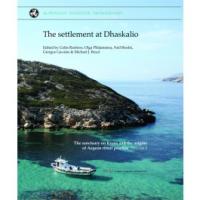
edited by Shuichi Matsumura, Peter Forster and Colin Renfrew
Hardback | £25 / US $50 | ISBN 978-1-902937-45-8 | 240 pp. | 85 figs. | 2008 | Buy now
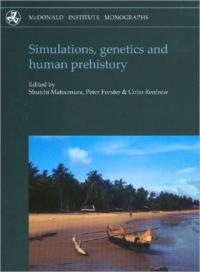
Data from molecular genetics have changed our views on the origin, spread and timescale of our species across this planet. But how can we reveal more detail about the demography of ancient human populations? For example, is it possible to determine when and how many people arrived at a certain continent, and which route they took from a choice of geographically plausible options? One of the most promising tools for such investigation is computer simulation incorporating various demographic scenarios.
2007
Excavations at Kilise Tepe, 1994–98: From Bronze Age to Byzantine in western Cilicia (2 vols.)
edited by Nicholas J. Postgate & David Thomas
Hardback | £95 / US $190 | ISBN 978-1-902937-40-3 (2 vol. set) | Vol. 1: xxii + 620 pp. | Vol 2: xvi + 244 pp. | 527 figs. (58 colour) | 43 tables | 2007 | Buy now
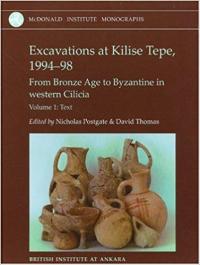
These two volumes report on five season’s excavation and four millennia of occupation at Kilise Tepe, from the Early Bronze Age through the rise and fall of the Hittite Empire and into the Byzantine era when the mound was crowned by a substantial church. The site takes its importance from its position guarding the Göksu Valley, one of the two main routes from the interior of Anatolia to the Mediterranean opposite Cyprus, so that it gives a record of relations between the interior and the seaboard. Of particular interest are the sequence from the Hittite Empire through the end of the Bronze Age and into the classical world, and the Byzantine levels associated with the church. The multi-authored report gives a full account of the stratigraphy and architecture, the ceramics and other artefacts, and various environmental studies.
Image and imagination: a global prehistory of figurative representation
edited by Colin Renfrew & Iain Morley
Hardback | £30 / US $60 | ISBN 978-1-902937-48-9 | x + 339 pp. | 306 figs. | 2007 | Buy now
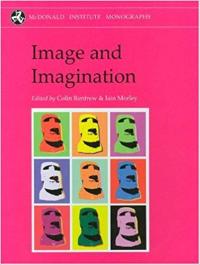
The dawn of art is sometimes equated with the birth of the human spirit. But when and how did figuration – sculpture, painting, drawing – actually begin? And did these first figurative creations coincide with the emergence of our own species, Homo sapiens? Is figuration a general and fundamental feature of the human condition? In this challenging volume leading experts review the evidence now available from the worldwide practice of prehistoric archaeology, and go on to formulate some important conclusions. The scope of this work is global. It sets out to explore the first stirrings of artistic endeavour and of figurative imagery on each continent, and to consider the social context in which they arose. It will be a fundamental resource for all those seeking to understand the origins of art and the beginnings of human spirituality.
Mediterranean prehistoric heritage: training, education and management
edited by Ian Hodder and Louise Doughty
Paperback | £35 / US $70 | ISBN 978-1-902937-38-0 | x + 160 pp. | 32 figs. | 7 tables | CD | 2007 | Buy now
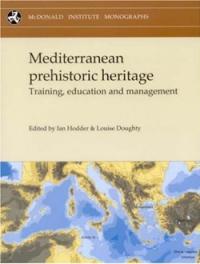
Drawing on the experience of the Temper project (Training, Education, Management and Prehistory in the Mediterranean) and wider examples from the Mediterranean, this volume explores the issues inherent in managing, interpreting and presenting prehistoric archaeological sites. The first section of the book contains thematic chapters on conservation, visitor management and interpretation, public participation, and issues of managing sites within their cultural landscape; the second section focuses on archaeology and education and the politics of national curricula, and presents detailed case studies. Written by academics and those working in the fields of archaeology, architecture, heritage management and education, this volume will be invaluable to students and practitioners alike.
The Nostratic dictionary
by Aharon Dolgoposky
Reposited dictionary | viii + 3659 pp. | first edition 2008 | currently third edition 2012 | Free to access

The concept of the language family, as a group of genetically related languages, has been well established in historical linguistics for more than two hundred years. But the notion of the macrofamily, a larger unit, comprising several language families with all their daughter languages, is a much more recent one. The Nostratic macrofamily, comprising many of the principal language families of Eurasia and North Africa has been most vigorously championed by the eminent Russian-born linguist Aharon Dolgopolsky. The appearance of the Nostratic dictionary represents an important moment in Nostratic studies, for the first time presenting a sufficient body of evidence to permit the evaluation by linguists of the status of the proposed Nostratic macrofamily, and by implication of other macrofamilies also.
The McDonald Institute has for some years been active in the field of archaeology and language and is proud to publish this work recognizing the highly significant impact which the general acceptance by historical linguists of the Nostratic macrofamily would have upon the whole study of the prehistory of languages and for the potential investigation, by archaeological means, of the social contexts in which early languages and proto-languages were spoken. It does so as a further contribution to the ongoing debate on the complex relationships between archaeology and language.
Prehistoric landscape development and human impact in the upper Allen Valley, Cranborne Chase, Dorset
edited by Charles French and Helen Lewis
Hardback | £60 / US $120 | ISBN 978-1-902937-47-2 | xxiv + 412 pp. | 189 figs. | 96 tables | 2007 | Buy now
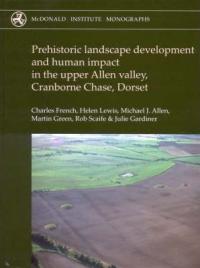
The results of palaeo-evironmental and archaeological investigations in the Upper Allen Valley, Cranborne Chase, Dorset, 1998–2003 led by Charles French (Cambridge) and Helen Lewis (Dublin) challenge some long-standing assumptions about the palaeoecology of the chalk, questioning the ubiquity of climax woodland and brown forest soils associated with it, the idea of extensive prehistoric soil erosion and the widely held model of quite dramatic Middle Bronze Age landscape change. A programme of valley-wide geoarchaeological survey and palynological analyses of the relict palaeo-channel system was conducted, along with sample investigations and open area excavations of a variety of prehistoric sites in this part of Cranborne Chase. New palynological, molluscan and soil micromorphological data suggest that there were different trajectories of clearance and landscape exploitation in the northern and southern parts of the study area over very short distances. GIS modelling techniques have been used to interrogate and visualize some of this new data which has provided possible independent corroboration.
Rethinking the human revolution
edited by Paul Mellars, Katherine Boyle, Ofer Bar-Yosef and C. Stringer
Hardback | £35 / US $70 | ISBN 978-1-902937-46-5 | xx + 436 pp. | 160 figs. | 33 tables | 2007 | Out of stock
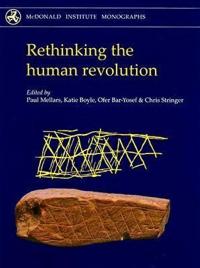
Arising from a conference Rethinking the human revolution reconsiders all of the central issues in modern human behavioural, cognitive, biological and demographic origins in the light of new information and new theoretical perspectives which have emerged over the past twenty years of intensive research in this field. The 34 papers cover topics ranging from the DNA and skeletal evidence for modern human origins in Africa, through the archaeological evidence for the emergence of distinctively 'modern' patterns of human behaviour and cognition, to the various lines of evidence for the geographical dispersal patterns of biologically and behaviourally modern populations from their African origins throughout Asia, Australasia and Europe, over the past 60,000 years. The authors are world-leading authorities in these fields.
Testing the hinterland: the work of the Boeotia Survey (1989–1991) in the southern approaches to the city of Thespiai
edited by John Bintliff, Phil Howard and Anthony Snodgrass
Hardback | £65 / US $130 | ISBN 978-1-902937-37-3 | xviii + 320 pp. | 457 b&w figs., 50 col. figs. | CD | 2007 | Buy now
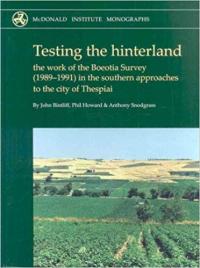
The Boeotia Survey in Greece is widely recognized as a milestone in Mediterranean landscape archaeology in the sophistication and rigour of its methodologies, and in the scale of the 25-year investigation. This first volume of the project’s publication deals with the landscape that formed part of the territory of the ancient city of Thespiai. This landscape acted as the laboratory in which the project refined its methodology: the entire territory was traversed systematically by survey teams, and artefacts were collected not only from every archaeological site located but also as ‘off-site’ material indicative of land-use practices such as manuring. The methodology made possible the construction of detailed period and density maps of rural activity, throwing unprecedented light on the interaction of the city with its hinterland particularly in its period of maximum size between the fifth century BC and the sixth century AD, as well as providing an exemplar for Mediterranean landscape archaeology more generally.
2006
Archaeoacoustics
edited by Chris Scarre & Graeme Lawson
Hardback | £25 / US $50 | ISBN 978-1-902937-35-9 | x + 126 pp. | 59 ills. | 2006 | Buy now
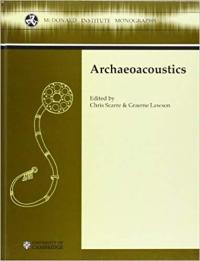
Archaeoacoustics focuses on the role of sound in human behaviour, from earliest times up to the development of mechanical detection and recording devices in the nineteenth century. Megalithic tombs, Palaeolithic painted caves, Romanesque churches and prehistoric rock shelters all present specific sound qualities which offer clues as to how they may have been designed and used. Archaeoacoustics brings together archaeologists and specialists in early musical instruments and acoustics in an attempt to unlock some of the meaning latent in the acoustics of such early structures and spaces.
Excavating Çatalhöyük: South, North and KOPAL Area reports from the 1995–99 seasons
edited by Ian Hodder
Hardback | £69 / US $138 Special price US$100 | ISBN 978-1-902937-27-4 | 688 pp. | 32 figs. | 50 tables | CD | 2006 | Buy now
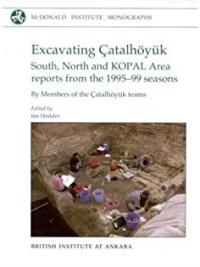
Ian Hodder’s campaigns of excavation at the world-famous Neolithic settlement of Çatalhöyük are one of the largest, most complex, and most exciting archaeological field projects in the world and recognized as agenda-setting not only in terms of our understanding of early farming communities in the Near East, particularly the central role religion played in their daily lives, but also in terms of the interaction between theory and practice in the trenches and on-site laboratories. This volume presents the results of excavation in three areas of the site, known as South, North, and KOPAL, excavated between 1995 and 1999. The book describes aspects of the excavation, recording and sampling methodologies that are necessary for an understanding of the results presented plus it incorporates interpretive discussion. It brings in data from the study of animal bones, lithics, ceramics, micromorphology and the full suite of analyses conducted on the material. These accounts are interspersed with individual specialists’ commentaries and conclusions, that mimic the process of collaborative interpretation that takes place during excavation and post-excavation. The ‘objective descriptions’ of the archaeology are thus exposed as interpretations involving a balancing of a variety of different types of data and scholarly input. Another thought-provoking volume in the Çatalhöyük excavation series which will be read with profit by any archaeologist engaged in working at theory in practice in the field.
Marshland communities and cultural landscape: the Haddenham Project, vol. 2
edited by Christopher Evans and Ian Hodder
Hardback | £35 / US $75 | ISBN 978-1-902937-32-8 | 344 pp | 291 figs. | 155 tables | 2006 | Buy now
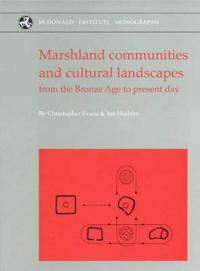
Set in the context of this project’s innovative landscape surveys, four extraordinary sites excavated at Haddenham, north of Cambridge chart the transformation of Neolithic woodland to Romano-British marshland, providing unrivalled insights into death and ritual in a changing prehistoric environment. Volume 2 moves on to later periods, and reveals how Iron Age and Romano-British communities adapted to the wetland environment that had now become established.
A woodland archaeology: the Haddenham Project, vol. 1
edited by Christopher Evans and Ian Hodder
Hardback | £35 / US $75 | ISBN 978-1-902937-31-1 | 262 pp. | 190 ills | 103 tables | 2006 | Buy now
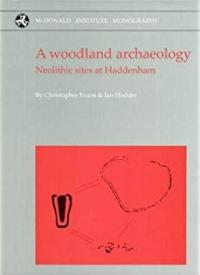
Set in the context of this project’s innovative landscape surveys, four extraordinary sites excavated at Haddenham, north of Cambridge chart the transformation of Neolithic woodland to Romano-British marshland, providing unrivalled insights into death and ritual in a changing prehistoric environment. The highlight of Volume 1 is the internationally renowned Foulmire Fen long barrow, with its preserved timber burial chamber and façade. The massive individual timbers allow detailed study of Neolithic wood technology and the direct examination of a structure that usually survives only as a pattern of post holes.
Phylogenetic methods and the prehistory of languages
edited by Peter Forster & Colin Renfrew
Hardback | £20 / US $40 | ISBN 978-1-902937-33-5 | 220 pp. | 50 figs. | 2006 | Buy now
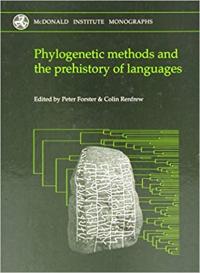
Evolutionary (phylogenetic) trees were first used to infer lost histories nearly two centuries ago by manuscript scholars reconstructing original texts. Today, computer methods are enabling phylogenetic trees to transform genetics, historical linguistics and even the archaeological study of artefact shapes and styles. But which phylogenetic methods are best suited to retracing the evolution of languages? And which types of language data are most informative about deep prehistory? In this book, leading specialists engage with these key questions.

